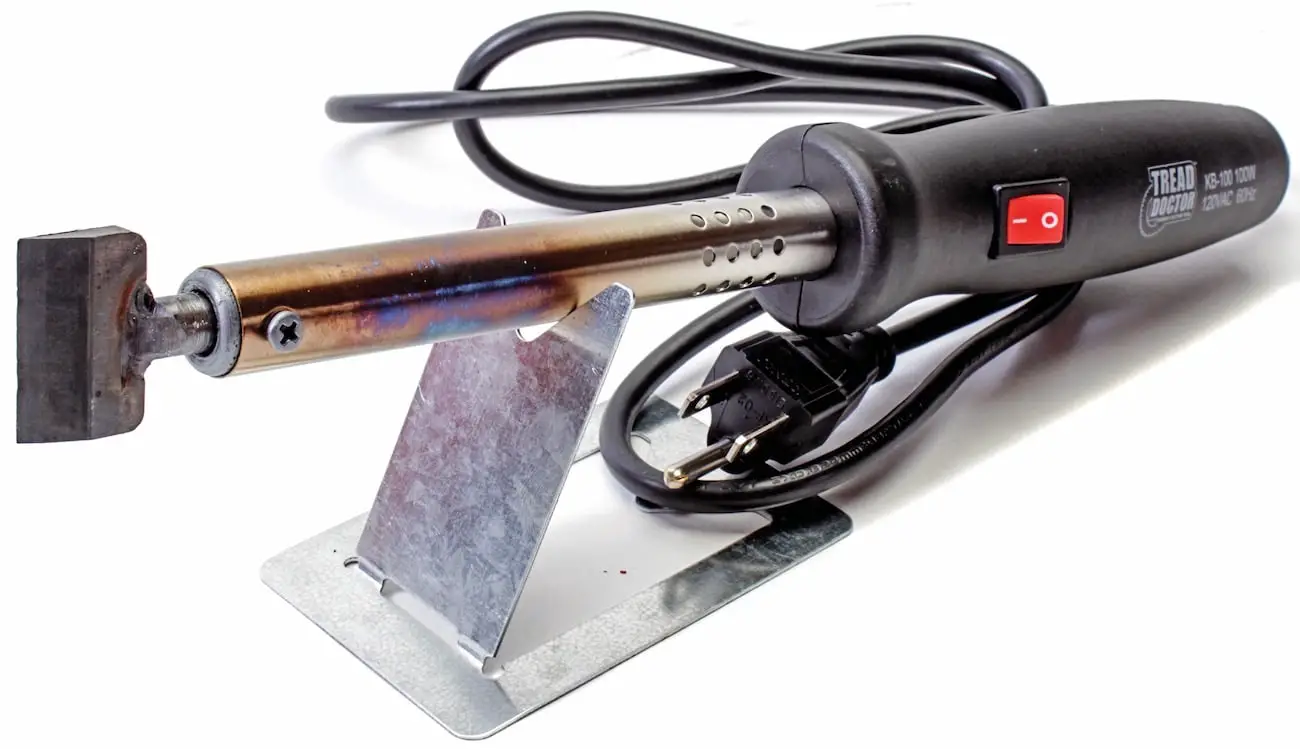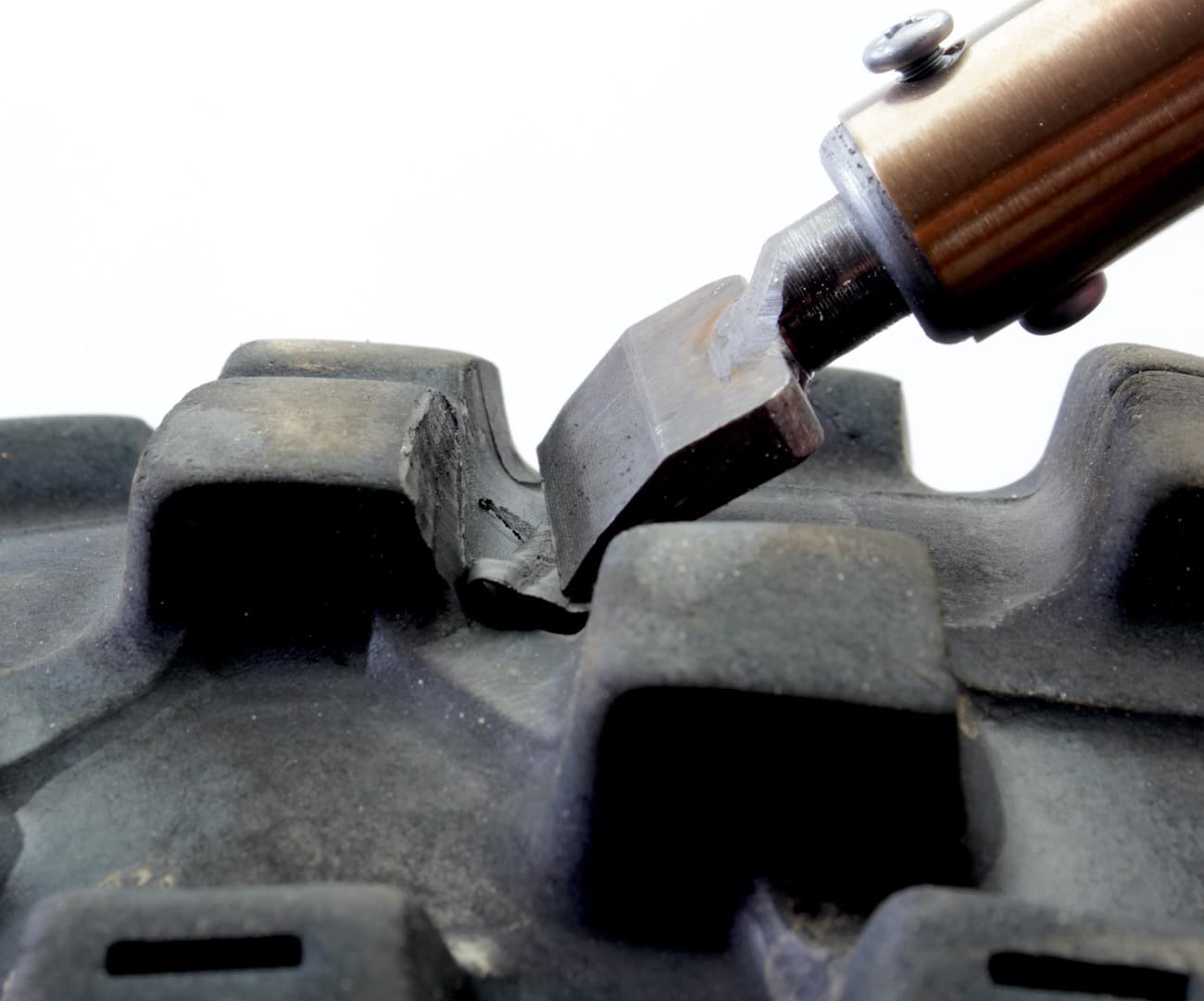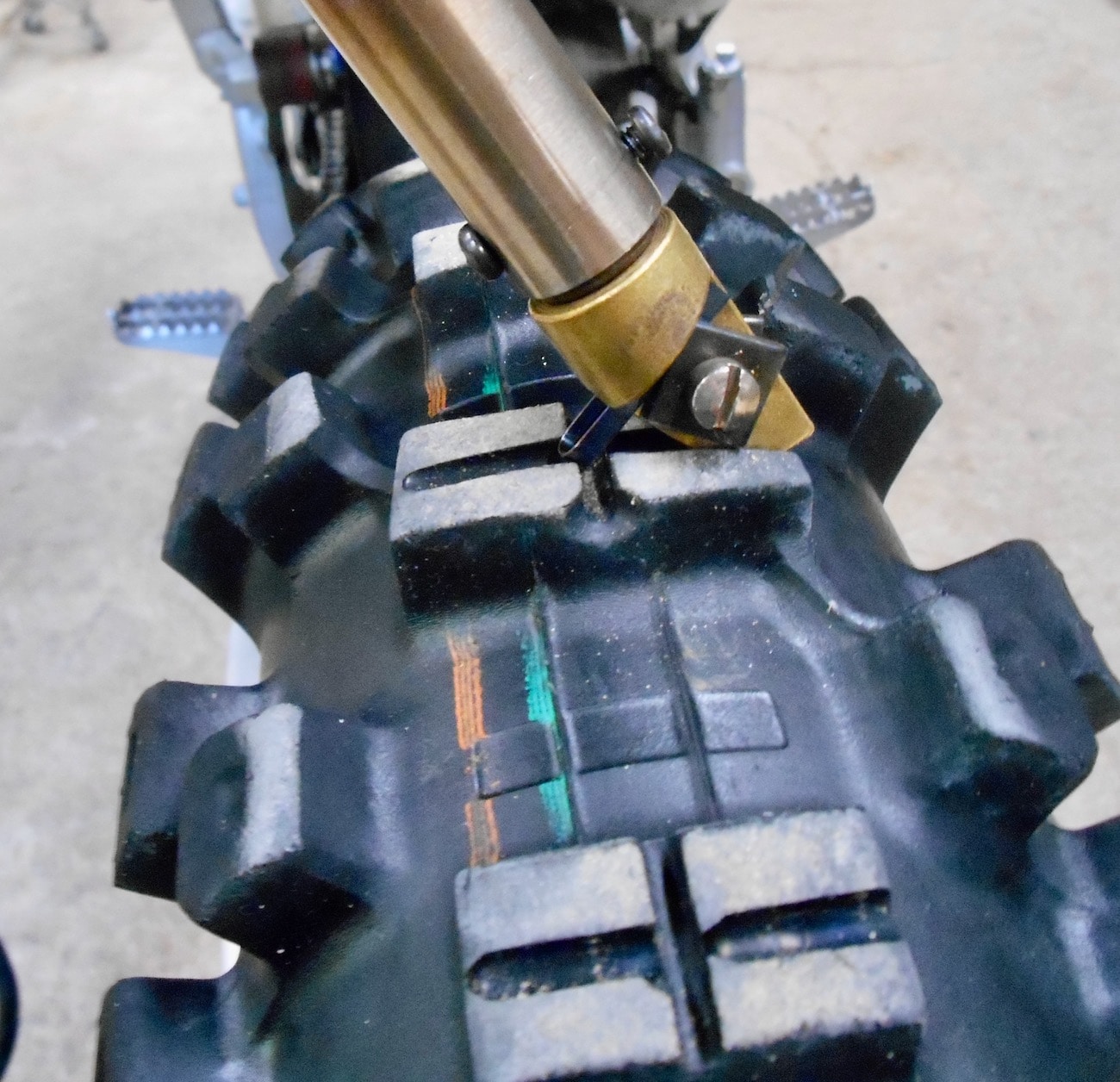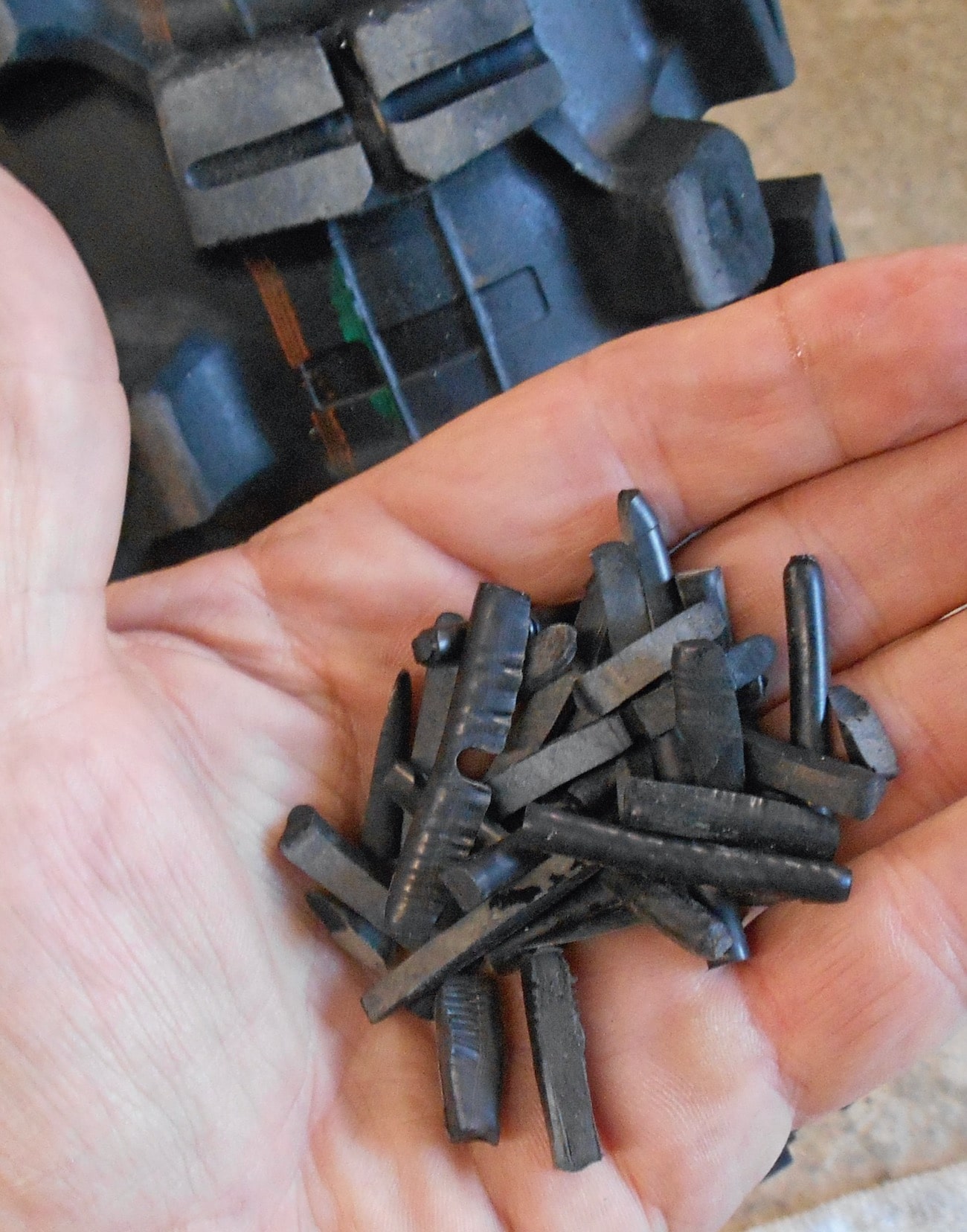ASK THE MXPERTS: IT’S A GROOVY KIND OF THING
 A tire groover, like the Tread Doctor, melts the rubber more than cuts it.
A tire groover, like the Tread Doctor, melts the rubber more than cuts it.
Dear MXperts,
I’m interested in getting a tire groover to extend the life of those very expense rings of rubber on my rims, but I was confused by a statement that MXA made in a recent issue. It said, “For MXA’s tastes, grooving across the knobs is better than vertical cutting. Grooves provide extra-sharp edges for acceleration and braking. Vertical cutting makes the knob flexier.” My plan was to put sharp edges on the front and back of the knobs to make them bite better. Why are you against this?
 This vertical cut does make the leading edge of the knob sharper, but it also makes the knob narrower, which will allow it to wiggle when it gets hot.
This vertical cut does make the leading edge of the knob sharper, but it also makes the knob narrower, which will allow it to wiggle when it gets hot.
Tire groovers, like the Tread Doctor, can be used two ways—and both ways have merit. First, with its large blade, it can slice off a thin layer of the acceleration edge of the rear tire with a scooping motion down the vertical side of the knob. Cutting the knobs vertically gives them a new edge while making the knob narrower. The inherent problem of cutting new faces on the knobs is that you are making the knobs flex more. This flexing accelerates wear and often adds a rollover feeling under a load. Vertical cutting of the knobs should be saved for a last ditch, one-last-ride, tire-usage plan.
 For motocross, it is best to to cut grooves across the contact patch of the knob. By siping the knob, you get more grip and the rubber near the surface get softer.
For motocross, it is best to to cut grooves across the contact patch of the knob. By siping the knob, you get more grip and the rubber near the surface get softer.
 When done perfectly, this is the byproduct of tire grooving.
When done perfectly, this is the byproduct of tire grooving.
Grooving an old tire by cutting narrow grooves across the center of the knob puts more biting edge on the tire’s contact patch. Think of it as a way of mimicking Dunlop’s knob-in-a-knob tread design. As old tires wear, the rubber dries out and becomes harder. Cutting grooves in the top of the knobs not only gives you an extra edge, called a “sipe,” but it softens the knob’s rubber for better grip. Hard or intermediate-to-hard terrain tires, especially ones with reinforced knobs with bridges (tie bars), are the easiest tires to sipe or groove. Grooves provide extra edges for acceleration and braking. So, instead of shaving the edge of the knob vertically, cut a groove into the contact patch of the center knobs with horizontal grooves and sipe the transitional knobs with 45-degree grooves from corner to corner. Don’t groove the side knobs.





Comments are closed.